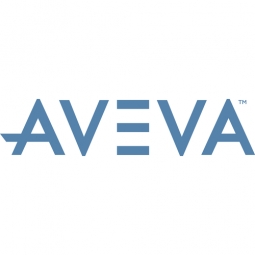AVEVA software helps a Canadian engineering firm complete projects at 16% under budget with new, faster technology.

Customer Company Size
Mid-size Company
Region
- America
Country
- Canada
Product
- AVEVA Integrated Engineering and Design
- AVEVA NET
Tech Stack
- Digital Engineering Environment
- Data Validation and Comparison
Implementation Scale
- Enterprise-wide Deployment
Impact Metrics
- Cost Savings
- Productivity Improvements
Technology Category
- Platform as a Service (PaaS) - Application Development Platforms
Applicable Industries
- Oil & Gas
Applicable Functions
- Discrete Manufacturing
- Product Research & Development
Use Cases
- Predictive Maintenance
- Process Control & Optimization
Services
- Software Design & Engineering Services
- System Integration
About The Customer
Vista Projects is a Canada-based engineering firm that specializes in in situ heavy oil, enhanced oil recovery (EOR), and conventional oil & gas projects. The company has engineered over 400,000 barrels per day of in situ oil production. Vista Projects has long been an enthusiastic believer in the value of integrated engineering in a digital environment. However, they were facing challenges with their traditional approach to engineering, which included manual working practices and an over-reliance on Excel spreadsheets. They also believed that each department stands alone in the development of a project.
The Challenge
Vista Projects, a Canada-based engineering firm, was facing challenges with their traditional approach to engineering. Their old conventional spreadsheet approach was unreliable and prone to errors. The company was also dealing with silos of activity and functions, which made it difficult to expedite projects. They were commissioned by a major Canadian oil & gas producer to deliver the FEED for a large-scale, greenfield, steam-assisted gravity drainage (SAGD) facility. The client wanted close collaboration with Vista to ensure that a compressed engineering schedule could be met and that data accuracy, transparency and security would be best in class.
The Solution
Vista Projects turned to AVEVA Integrated Engineering & Design for a solution. The project was the oil sands industry’s largest and most comprehensive implementation of a digital engineering environment. The AVEVA platform enabled Vista to consolidate project data from multiple sources and make it available in a common location. The team was also able to validate and compare data and check business logic. The data available in AVEVA IE&D is near-live. The platform cross-references and links all related data items the moment data is uploaded, based on the project configuration. AVEVA maintains system, subsystem, and tag relationships in line with system boundary drawings.
Operational Impact
Quantitative Benefit

Case Study missing?
Start adding your own!
Register with your work email and create a new case study profile for your business.
Related Case Studies.

Case Study
Taking Oil and Gas Exploration to the Next Level
DownUnder GeoSolutions (DUG) wanted to increase computing performance by 5 to 10 times to improve seismic processing. The solution must build on current architecture software investments without sacrificing existing software and scale computing without scaling IT infrastructure costs.

Case Study
Remote Wellhead Monitoring
Each wellhead was equipped with various sensors and meters that needed to be monitored and controlled from a central HMI, often miles away from the assets in the field. Redundant solar and wind generators were installed at each wellhead to support the electrical needs of the pumpstations, temperature meters, cameras, and cellular modules. In addition to asset management and remote control capabilities, data logging for remote surveillance and alarm notifications was a key demand from the customer. Terra Ferma’s solution needed to be power efficient, reliable, and capable of supporting high-bandwidth data-feeds. They needed a multi-link cellular connection to a central server that sustained reliable and redundant monitoring and control of flow meters, temperature sensors, power supply, and event-logging; including video and image files. This open-standard network needed to interface with the existing SCADA and proprietary network management software.

Case Study
Refinery Saves Over $700,000 with Smart Wireless
One of the largest petroleum refineries in the world is equipped to refine various types of crude oil and manufacture various grades of fuel from motor gasoline to Aviation Turbine Fuel. Due to wear and tear, eight hydrogen valves in each refinery were leaking, and each cost $1800 per ton of hydrogen vented. The plant also had leakage on nearly 30 flare control hydrocarbon valves. The refinery wanted a continuous, online monitoring system that could catch leaks early, minimize hydrogen and hydrocarbon production losses, and improve safety for maintenance.





